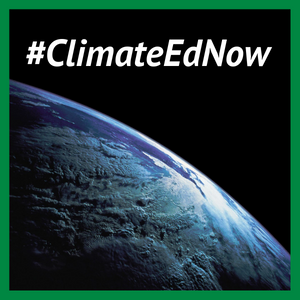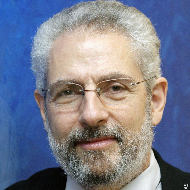But climate science is such a tangle of facts and theories! That’s not a drawback but a virtue. After all, our chief aim is not to pour a bucket of facts into our students’ heads — facts that some of them will never understand and many will soon forget. The most important thing we can do is give every student an idea of the process of science. When you understand how scientists work, you know how to identify reliable knowledge in your daily life.
Climate study offers many stories that show how scientists work in our times. Consider, for example, a number that is crucial for our future: exactly how much global warming will result from a doubling of the carbon dioxide gas in the atmosphere? A consensus about this number (“sensitivity”) was first announced by a committee of the National Academy of Sciences back in 1979. The committee estimated the rise would be between 1.5 and 4.5 degrees Celsius, with three degrees most likely. The latest consensus is a bit narrower, 2.5–4 degrees, with three still most likely. (Today’s children will experience this deadly heat in their lifetimes, if emissions continue unchecked.) Where do these numbers come from?
The 1979 committee used computer models. The models were primitive — barely sketches — but different models gave similar results. Nobody has ever been able to make a model that reproduces the present climate and does not heat up if you put more carbon dioxide in the simulated atmosphere. Later, in the 1990s, entirely different groups of scientists found ways to measure temperatures and carbon dioxide levels in the distant past. It turned out the levels went up and down a lot, and they moved in tandem. The ratio was, again, three degrees for doubled carbon dioxide, give or take a degree or two. The lesson here is that scientists don’t actually spend much effort trying to reproduce experiments and observations. They want to see if they get the same results by different methods. When computer coders and paleontologists come up with the same number, you begin to feel you are in touch with reality. The icing on the cake came in the 2010s. By then other groups of scientists had been monitoring the rising global temperature and rising carbon dioxide level for half a century, so they could see what had actually happened. Yes, the same numbers, from a third independent set of data.
You can dig deeper at any point. For example, how do we know temperatures in the distant past? Cores of ice from Antarctica, fossil leaf imprints in stones, shells in ancient clay from the seabed ... again, entirely separate fields of science getting the same numbers. This is modern science: not a lone genius, but thousands of scientists working in teams at locations around the world, arguing and sharing. Now there’s an important lesson. And climate science is a great way to teach it.
Read other essays from our #ClimateEdNow series.

 Teaching climate science is tough. The climate system is complicated, with so many moving parts that the best experts don’t understand it all. A lot of the science is new; we have to learn it along with the students. And it’s a political minefield. To avoid catastrophic climate change people must transform the global economy wholesale, against the resistance of powerful forces.
Teaching climate science is tough. The climate system is complicated, with so many moving parts that the best experts don’t understand it all. A lot of the science is new; we have to learn it along with the students. And it’s a political minefield. To avoid catastrophic climate change people must transform the global economy wholesale, against the resistance of powerful forces.